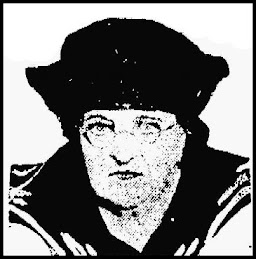 |
| Mikal Mahdi |
Mikal Mahid admitted to killing an off-duty police officer in 2004. On April 11, 2025 he was executed by firing squad. He chose this execution method himself, rejecting the electric char or lethal injection.
His legal team filed a complaint that the execution was botched. Only two of the bullets struck Mahid, and struck him in such a way as to prolong his death. This, his attorneys asserted constituted cruel and unusual punishment. Acceding to a 2024 state Supreme Court ruling, the amount of time a person would be expected to remain conscious after being shot in the heart is no longer than 15 seconds.
There has been intense scrutiny into this botched exception, with lawyers, medical examiners, and advocacy groups demanding to know why this admitted murderer didn't get a more swift and merciful end. A witness from the Associated Press wrote that Mahdi cried out as the shots hit him, and his arms flexed. The report went on to say, "He groaned two more times about 45 seconds after that. His breaths continues for about 80 seconds before he appeared to take one final gasp.
"The implications are horrifying for anyone facing the same choice as Mikal," said his attorney, David Weiss. "South Carolina's refusal to acknowledge their failures with executions can not continue." (Sources: "S.C. inmate's firing squad execution was 'botched,' with bullets mostly missing his heart, lawyers say," NBC News, May 9, 2025)
The abundantly lavish coverage of Mahdi's exception doesn't even mention the men Mahdi executed on his own initiative: Christopher Boggs and James Myers. It took doggedness and diligence to find information about them, and even that is scant. I couldn't even find a picture of either victim.
Christopher Boggs was a 29-year-old clerk in a convenience store. Mahdi, then 21 years old, entered the convenience store and took a can of beer to the checkout. When Christopher was checking Mahdi's ID, Mahdi shot him point-blank in the face, then put another bullet into him after he had collapsed onto the floor. I can find no news coverage expressing any concern about how much Christopher Boggs suffered as his life was taken from him, a man whose only crime was working hard to earn a living.
While on the run after murdering Christopher, Mahdi decided to relax on a farm owned by James Myers, a 56-year-old off-duty police officer. James had been at the beach with his wife, daughter, and sister having a family birthday celebration. When he returned to the farm Mahdi spotted him and shot him nine times. He then covered his body with diesel fuel and set it on fire. Again, the press show no interest in the suffering of James Myers as he was executed for the crime of walking onto his own property.
But those abortions were illegal. Let's look at a legal execution -- the execution of Sarah Brown in Kansas during the summer of 1993. Two injections of potassium chloride directly into her brain were unsuccessful in causing death. She was then wrapped in a blanket and left unattended for 24 hours before a nurse intervened and said that Sarah should be provided with care. Severely brain damaged, Sarah lost her vision and would never walk or talk. She died five years later, on September 28, 1998.
What crime had
Sarah Brown committed that had ended in her being slated for death?
 |
| Sarah Brown |
Just like Christopher Boggs and James Myers, it had simply been a matter of being in the wrong place at the wrong time. Sarah had just had the bad fortune of being in the womb of a mother who chose an abortion at 36 weeks. Using Sarah's mother's age -- just 15 years old -- Dr. George Tiller proclaimed the death of Sarah to be vital to preserving the health of her mother.
There was no public outcry over Sarah Brown's botched execution. There were no hearings to determine if it was okay to continue to inject potassium chloride into the brains of healthy, viable unborn babies. In fact, when the Attorney General of Kansas decided to address
Tiller's post-viability "health of the mother" abortions, it was he, not Tiller, whose career was destroyed.
Because that's how we do things in America. Just as
abortion-rights activists who had power and authority in Pennsylvania moved to protect the interests of Kermit Gosnell, abortion-rights activists who had power and authority in Kansas moved to protect the interests of George Tiller.
Mikal Mahdi's botched execution led to a huge public outcry, a huge public debate, and political wrangling over when and how and why to execute people who have committed a crime and gone through due process. Would that Sarah Brown's botched execution had gotten even a tenth of that attention. But the state-sanctioned killings of children like Sarah will continue as long as we entrust their care to abortion-rights supporters.
 Mrs. Florence Zeck Porter, age 18, was admitted to Saint Luke's Hospital in Chicago on Saturday night, May 11, 1907.
Mrs. Florence Zeck Porter, age 18, was admitted to Saint Luke's Hospital in Chicago on Saturday night, May 11, 1907. 












.jpg)







